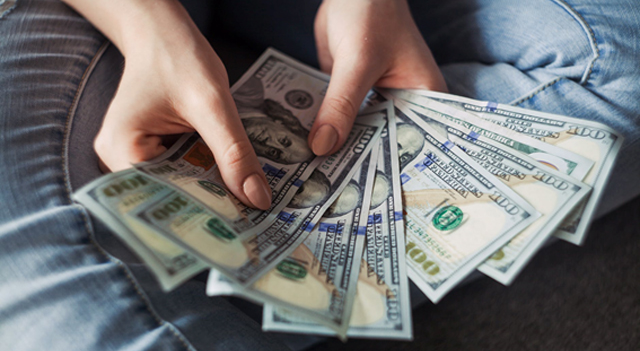The U.S. dollar rose slightly on Wednesday, steadying amid muted trading as investors anticipated the formal end of the country’s longest-ever government shutdown. With volatility subdued, markets turned their focus to the Federal Reserve’s upcoming policy meeting and key labor market data expected once the government reopens.
At 04:40 ET (09:40 GMT), the Dollar Index, which measures the greenback against a basket of six major currencies, was up 0.2% at 99.470.
Dollar Steadies After Labor Market Jitters
The dollar regained modest ground following a brief dip earlier in the week, when ADP reported that U.S. companies shed jobs in late October — stoking concerns about slowing employment growth. The data added uncertainty to the Fed’s outlook ahead of its December meeting.
“The dollar was briefly hit yesterday after private sector payroll firm, ADP, suggested that 11k jobs had been lost per week through October. This report used a different methodology from its recent release, showing +42k jobs created that same month. Yet the dollar did not stay offered for long and has come back a little bid overnight,” ING analysts wrote in a note.
According to the CME FedWatch Tool, traders now see a 61.9% probability of a 25-basis-point rate cut at the Fed’s December 10–11 meeting, up from 57.8% a day earlier.
The U.S. Senate earlier this week approved a funding bill to reopen the government, with a vote in the House of Representatives expected soon.
“If approved, that means the U.S. government can reopen, perhaps on Friday, and that the September NFP jobs report (potentially USD negative) can be released early next week,” ING added.
Euro and Pound Under Pressure
In Europe, the euro slipped slightly, with EUR/USD down 0.1% at 1.1573 after official data confirmed that German inflation slowed to 2.3% in October, down from 2.4% in September. The reading reinforced expectations that the European Central Bank will keep monetary policy steady for now.
The British pound also weakened, with GBP/USD losing 0.2% to 1.3124 after softer U.K. labor data. The currency was further pressured by renewed political uncertainty amid speculation that Prime Minister Keir Starmer could face a leadership challenge later this month.
“Even though Starmer’s approval ratings are very poor, his removal would create some doubt about the future of Chancellor Rachel Reeves and add some risk premium to U.K. asset markets,” ING said.
Yen Slips to Nine-Month Low; Aussie Gains
In Asia, the yen weakened further, with USD/JPY climbing 0.4% to 154.73 as investors continued to favor risk assets. The safe-haven currency hit a nine-month low, pressured by expectations of looser fiscal policy under new Prime Minister Sanae Takaichi.
“One factor thought to be keeping USD/JPY supported is direct investment into the US. These potential flows have brought USD/JPY to psychological resistance at 155, where Japanese verbal intervention is picking up,” noted ING.
Meanwhile, the Chinese yuan was little changed, with USD/CNY up slightly at 7.1177, while the Australian dollar gained 0.2% to 0.6538 after a senior RBA official said there was “increasing debate about whether the current cash rate of 3.6% is restrictive enough to keep inflation in check.”
With sentiment improving and the U.S. government poised to reopen, the dollar continued to firm modestly — supported by cautious optimism and investors positioning ahead of critical economic releases in the coming week.
